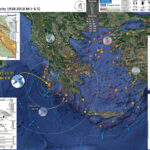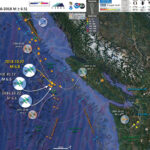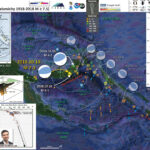Well, I was about to head to town and noticed a magnitude M = 5.0 earthquake in Greece. I thought to myself, I wonder if that is a foreshock. It was. Then, the M 6.8 mainshock hit while i was…
Earthquake Report: Explorer plate
Last night I had completed preparing for class the next day. I was about to head to bed. I got an email from the Pacific Tsunami Warning Center notifying me that there was no risk of a tsunami due to…
Earthquake/Landslide/Tsunami Report: Donggala Earthquake, Central Sulawesi: UPDATE #1
We continue to learn more each day as people collect additional information. Here is my initial Earthquake Report for this M 7.5 Donggala Earthquake. In short, there was an earthquake with magnitude M = 7.5 on 2018.09.28. Minutes after the…
Earthquake Report: New Britain!
Just a few hours ago there was a subduction zone megathrust earthquake along the New Britain Trench in the western equatorial Pacific Ocean. In this region of the world, the Solomon Sea plate and the South Bismarck plate converge to…




